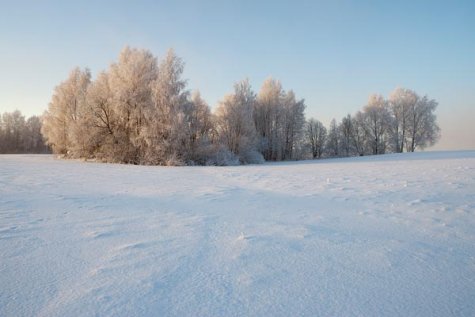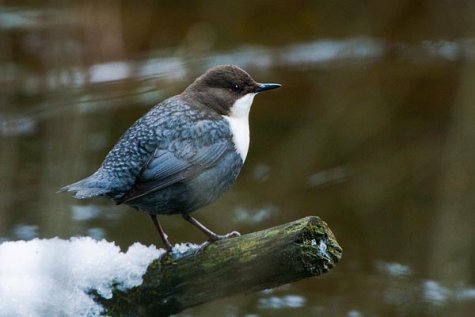Text: Kristel Vilbaste
Photos: Arne Ader
Translation:
Liis from Forum
Snowy times are here.
“Now we will do digging sport and afterwards skating sport”, 4-year-old Aotäht informed us on the ice-covered pond, and flashed his snow shovel. In a couple of days a 20-cm thick snow cover had fallen on our skating ice.
The four weather signs of the week:
orphaned bear cubs,
large boar herds,
frosted birches, and
snow all over Estonia.
There was really enough snow everywhere in Estonia, only furthest out on the western islands the ground has just a centimetre-thick frost cover; in the Haanja hills however there are forty centimetres of it, up to a small child’s kneecaps ... When we shovelled open our skating area on the pond, the whole family tried to solve a practical outdoors learning exercise – how much did the heap of snow weigh that we threw on to the pond edge, each full shovel carrying 7 kilos. But we soon lost count, and then had instead to measure the diameter of the pond – 12 metres. That well-known equation from school mathematics, peearrsquare (S=π r² ) yielded about 100 square metres as the pond surface area, and with the 20-centimetre snow cover it must have been altogether 20 cubic metres. Since the weather on Friday was perfect snowman-making weather, with much water in the snow – density 400 kg/cubic metre - the result would be that during one hour we shovelled away nearly 8 tons of snow. Phew! Our small sportsman digger was finally so tired that he lay down on the snow, legs and arms spread out and demanded: “Be quiet, I am counting cloud lambs”.
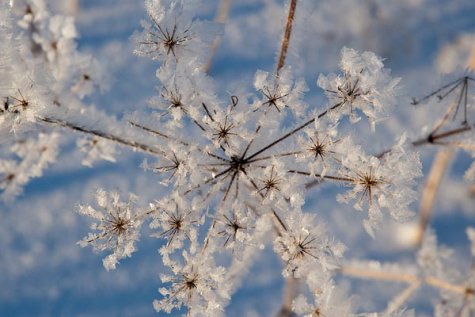
Ice on wild parsnip.
Brumbly bears and databases
Sadly the week’s major nature news were three bear cubs left without their mother. Mikk Sarv comments that this may well count as the first victims of last year’s forestry reform – forestry people sitting at their office desks cannot possibly know under which tree the bear family is asleep – which the earlier foresters knew very well, being out in their forest areas all the time they could not avoid to notice the traces of such a large animal’s activities. It would be interesting to see the information database of the State Forestry Management Centre (RMK) and the Environmental department: are there any data at all on where bears hibernate? In the animal rehabilitation center the cubbies are slowly picking up. The quick and competent action of the forest workers kept them from freezing. The nearly two-kilo cubbies study their new bear lair with deep, dark eyes, but their ears are as yet closed. Kaja Kübar at the Nigula animal rehabilitation centre feeds them milk mixture every two hours, even at night. The rolling and stumbling cubs should rise to their feet sometime in the middle of February.
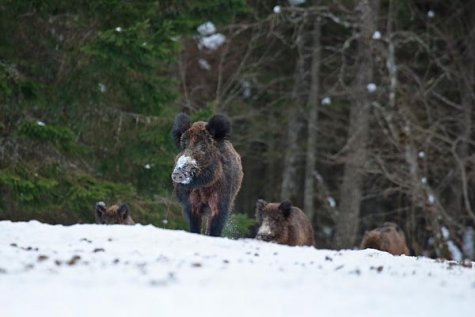
Boar herd. Leader sow in front.
Pig life
Even on the white snowfields animal news happen. Hunter Neil Ilves, from near Koeru, tells that wild boar herds, sounders, are ever larger; a lonely wolf here or there tries to scatter them so as to hunt the boars one by one. From the discussions of the watchers of Pig Camera (Forest Camera) of Looduskalender.ee we learn that boar “weddings” are still on. But weather man Gennadi Skromnov says that the first striped piglets of the year will probably still be born in the beginning of March, people of old knew that the gestation of boars was 3 months, 3 weeks and 3 days. There have been 17 boars at once in camera view, last year’s record was 28. Those who are interested can sit down at their computer screen at about 5.30 p.m. when it gets dark.
Dipper.
Less tits
Strangely on Saturday a crow was already flying around with something longish in its beak. But this was probably only pre-preparation to the new nesting year. On Kihnu, Aivo Klein saw two horned larks, they have never been bearers of spring here. Rambles on river banks are exciting, you can meet dippers and kingfishers. The whole week bird watchers have discussed whether the January population of tits has decreased. Could the reason for this be lack of the favourite food of tits – sunflower seed - on the feeding table, the snowstorms and frost of December, sparrowhawks, or just natural wintertime migration? Whatever, the flock of yellow-breasts knocking on our timber walls have really diminished.
A message too to all knocking on the ice cover of Peipsi: it is again possible to go out on Peipsi, but the ice on the lake is covered with thick snow, and cracks cannot be seen in this snowy whiteness – so bring along your rescue gear to the ice!
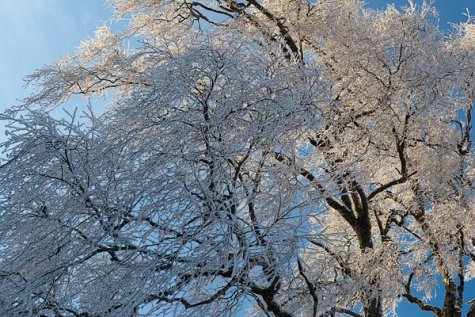
Frosted birch.
Walk for your health!
Two weeks ago, when I had to go by car criss-crossing through Estonia from Mustvee to Haapsalu at the beginning of a working day, I, as a habitual nature-watcher, noticed one sad thing – within short distances of each other there was yet another properly dressed middle-aged man walking on the roadside, sometimes limping a bit on one leg. I know that these are morning exercise walks of people who have had a heart or brain infarct or haemorrhage, but they were so astonishingly many! So, therefore also this advice: do make time for exercise before you have to walk like this. Walk, walk, walk outdoors!
FOR CHILDREN
Clapper
Mikk Sarv says that in the beginning of a year people of old used to make loud noises to scare all kinds of bad spirits away. For this it is not necessary to bring home a drumming set at once for your child, instead you can make a clapper. You need 3x5 cm pieces sawn from a half-centimetre-thick wooden board. Two holes should then be drilled near the top edge, parallel with each other, and the staple of wooden squares then tied tightly together with string through these holes. The free edges will clatter loudly, like castanets, when the contraption is shaken.
Quotation:
You can go out on Peipsi again!

